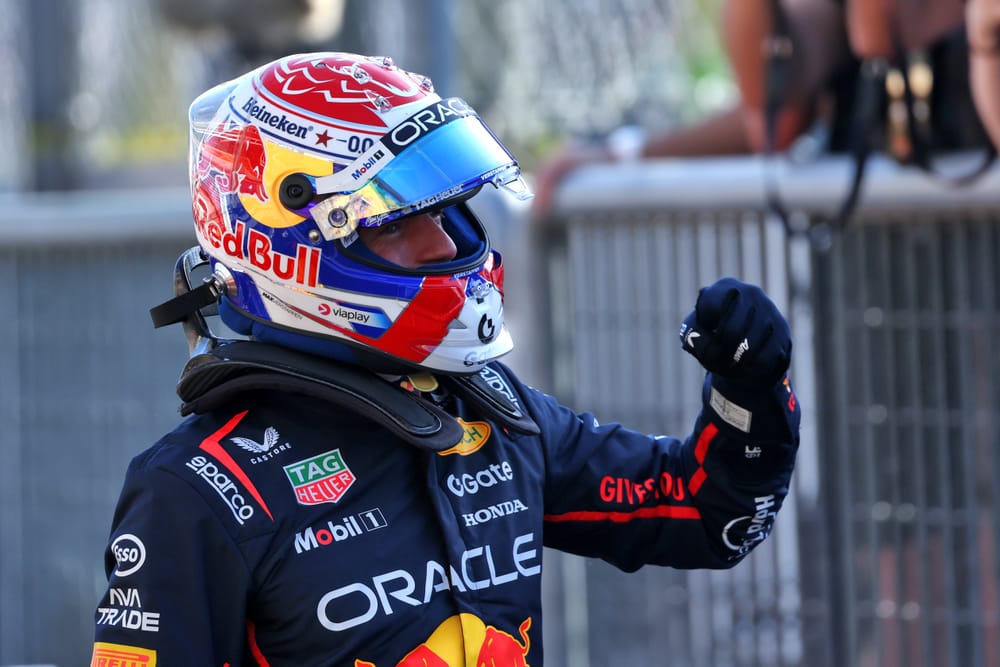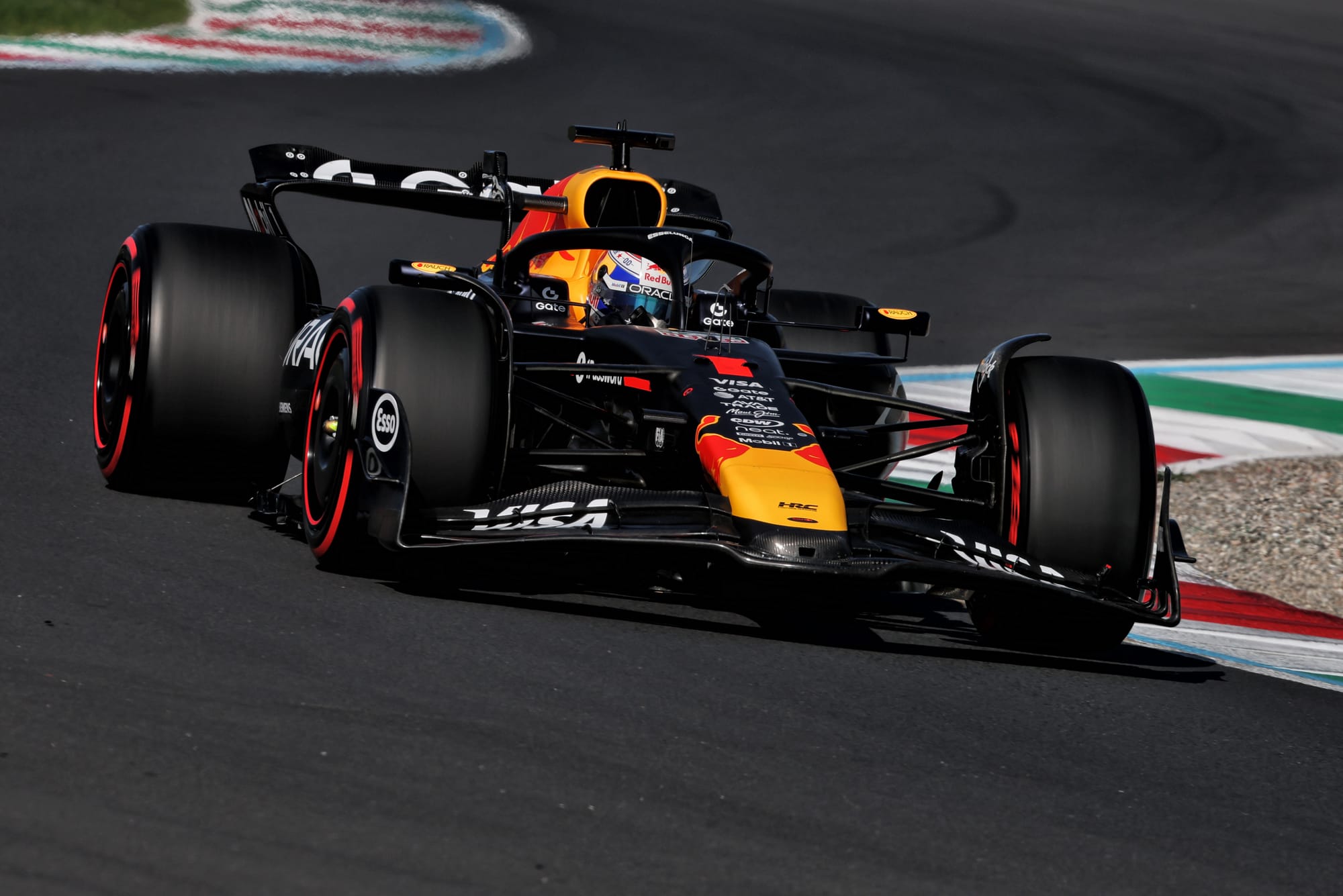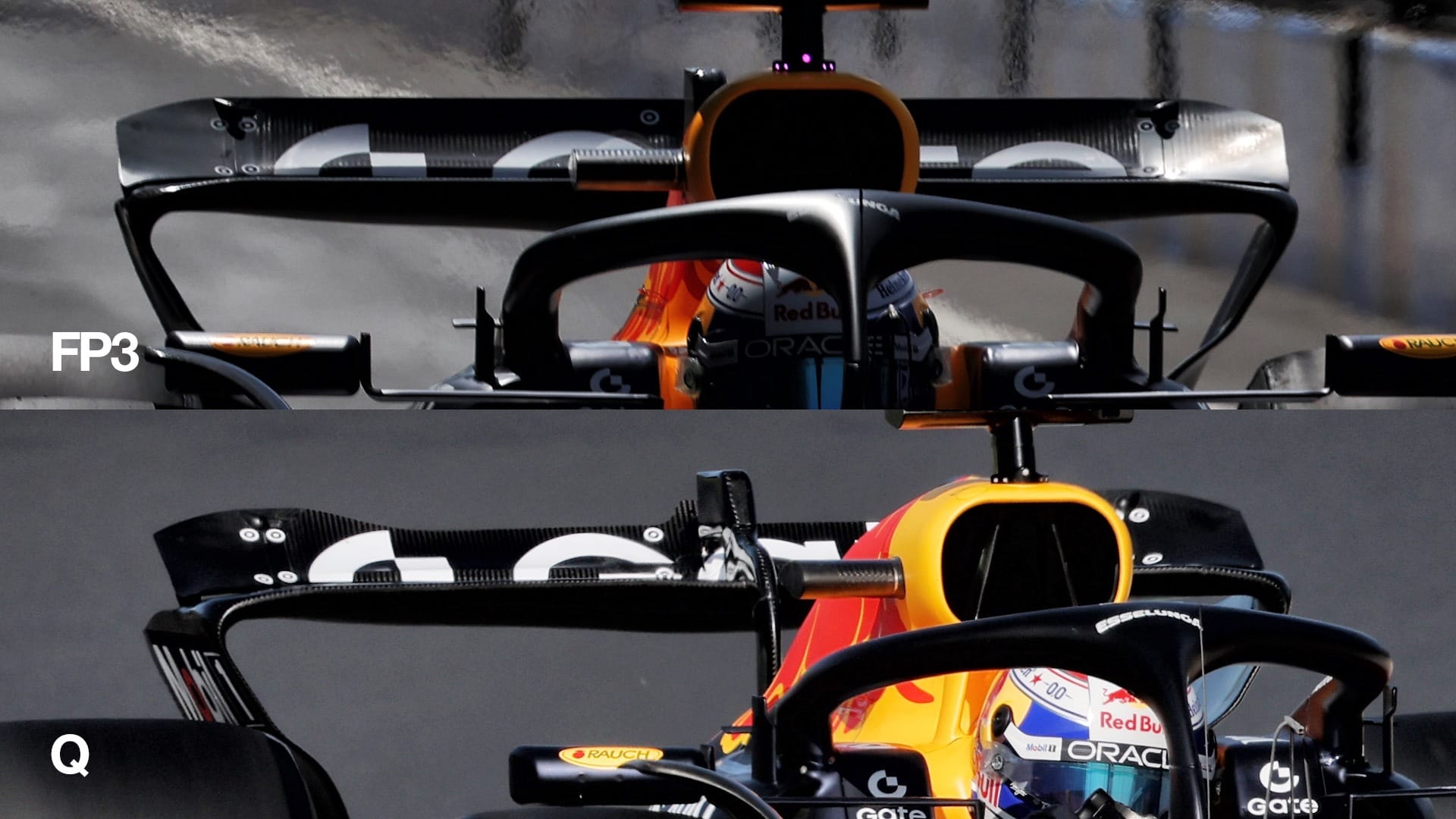Max Verstappen’s Pole Position and the Road to Monza Glory: Can He Convert His Success into a Race Win?
As the Italian Grand Prix approaches, all eyes are on Max Verstappen, who secured pole position in a stunning qualifying performance at the Monza circuit. This moment was especially significant considering the struggles Red Bull faced last year at the same track. Verstappen’s pole position is a testament to the progress Red Bull has made in just one year. However, with McLaren’s Lando Norris and Oscar Piastri alongside him, and the ever-present threat of tire degradation and race strategy issues, the race ahead promises to be anything but predictable.

The Shadow of Monza 2024: Red Bull’s Recovery
Last year, Red Bull’s performance at Monza was far from their usual dominance. Verstappen, who was leading the championship, qualified in seventh place and finished sixth, a result that highlighted the car’s struggles at a circuit where high-speed stability and downforce are crucial. This poor performance was a wake-up call for the team, revealing key weaknesses in the car’s design, particularly in how it reacted when downforce was reduced.
During the 2024 Italian Grand Prix, Verstappen struggled with a dramatic shift in the car’s balance, which was exacerbated by the loss of downforce. This imbalance led to a lack of stability, particularly in the corners, and made the car difficult to drive. Max and his engineers identified the issue after analyzing telemetry data and understood that once the downforce was stripped away, the car’s performance drastically declined. The team took valuable lessons from that weekend and applied them to this year’s preparations.
This year’s Monza qualifying showed the fruits of Red Bull’s efforts. Their approach focused not on broadening the setup window for greater flexibility, but rather on tightening it to ensure the car remains balanced under all conditions. Paul Monaghan, Red Bull’s chief race engineer, described this strategy as “reducing the balance window,” which means the car now behaves more predictably, avoiding extreme oversteer and understeer. This refinement allowed Verstappen to attack the corners with greater confidence and stability than in 2024, leading to his pole position.
The Importance of the Slipstream in Qualifying
The qualifying session at Monza often revolves around the art of slipstreaming, and Verstappen’s pole position wasn’t entirely a product of Red Bull’s car development. While Verstappen did benefit from a tow during his first run—courtesy of Yuki Tsunoda—he was not fully reliant on this advantage. The slipstream effect was significant but small, and while it can provide valuable extra speed on the straights, it comes with the trade-off of being caught in dirty air, which reduces cornering efficiency.
Interestingly, Verstappen didn’t have the benefit of a tow during his second run, although he might have gained a slight advantage from Lando Norris towards the end of his lap. It was a strategic balancing act for all teams to use the slipstream without compromising tire management or losing valuable cornering performance. Despite the uncertainties and challenges, Verstappen executed his lap perfectly, securing a crucial pole position that positions him well for the race ahead.

McLaren’s Disappointment: Where Did Their Pace Go?
McLaren has been one of the most impressive teams of the season, and many expected them to be strong contenders for pole position at Monza, given their impressive form in previous races. However, Norris and Piastri were unable to challenge Verstappen’s pole position in the same way they have at other circuits.
One of the main reasons for McLaren’s struggle at Monza lies in the nature of the circuit itself. Monza is a high-speed track with long straights and relatively few corners. McLaren’s strength lies in its car’s cornering ability, particularly in slower, more technical sections of the track. At Monza, however, their advantage in the corners is negated by the long straights, where Red Bull’s car excels due to its efficiency at higher downforce levels.
Andreas Seidl, McLaren’s team principal, explained that McLaren’s performance was affected by the track’s demand for lower downforce. McLaren’s car, optimized for high downforce levels, loses efficiency when the downforce is reduced, while Red Bull’s car remains strong across all downforce levels. This inherent difference in car characteristics led to McLaren’s inability to match Red Bull’s pace on the straights, despite their advantages in cornering.
The resurfacing of the Monza track last year has also played a role in increasing the overall speed of the circuit. This year, lap times have been faster than ever before, with Verstappen setting a record-breaking lap time that surpassed Lewis Hamilton’s 2020 pole time by more than 0.2 seconds. The increased grip from the resurfaced track has contributed to Red Bull’s advantage, further exposing McLaren’s weaknesses.

Ferrari’s Struggles and the Tire Preparation Game
Ferrari, a team with high expectations at their home Grand Prix, also had a disappointing qualifying session. Charles Leclerc, who qualified fourth, expressed that he felt he maximized the car’s potential, yet Ferrari could not mount a serious challenge for pole position. Despite the improvements they’ve made throughout the season, Ferrari’s performance at Monza was hampered by a combination of tire preparation issues and the challenges of optimizing their lap with the slipstream.
Ferrari’s tire management has been a key focus for the team, as they struggle to extract the maximum performance from their tires during qualifying. The team’s lack of a perfect slipstream strategy, despite having Lewis Hamilton available as a potential tow partner, also played a role in their underperformance. Leclerc admitted that Ferrari had discussed the possibility of using Hamilton to pull him along for a faster lap but ultimately chose not to, possibly missing out on a valuable time gain.
In addition to the slipstream debate, tire degradation is another critical factor at Monza. Ferrari’s inability to fully optimize their tire management and slipstream tactics meant they couldn’t extract the maximum pace from their car, leaving them with less than stellar qualifying results.
The Race Ahead: What to Expect
Looking ahead to the race, the key question is whether Verstappen can convert his pole position into a race win. With McLaren’s pace still strong and Ferrari looking to recover, it promises to be a competitive race. One of the main challenges for all teams will be tire degradation. Monza is known for its high-speed corners and long straights, which puts significant strain on the tires, especially as the race progresses.
Red Bull may have the edge in terms of one-lap pace, but Verstappen has expressed concerns about the team’s race pace, citing the issues they faced in Zandvoort. If McLaren can manage their tire degradation better than Red Bull, they could be in a strong position to challenge Verstappen for the win.
The opening lap will be crucial, as positions gained early on can have a significant impact on race strategy. If Norris or Piastri can get ahead of Verstappen in the early stages, it could set the tone for the rest of the race. However, Verstappen’s ability to defend and manage tire wear will likely prove decisive, as the one-stop strategy leaves little room for error.
Conclusion: A Race of Strategy, Tire Management, and Speed
The 2025 Italian Grand Prix is shaping up to be an exciting and unpredictable race. Max Verstappen’s pole position is a testament to Red Bull’s recovery from their disappointing 2024 performance at Monza, but McLaren and Ferrari are ready to capitalize on any mistakes. Tire management, strategy, and the ability to manage the opening laps will be the key factors that decide the outcome of the race. With Verstappen in the lead, the race is far from over, and any of the top contenders could seize victory if they can outsmart their rivals in what promises to be a thrilling contest.
News
Die Sprache der Liebe: Wie Bushido und Anna-Maria Ferchichi ihre 15-jährige Ehe in der Paartherapie retteten – Das emotionale Geständnis der „Liebessprachen“-Krise
Die Ehe von Bushido und Anna-Maria Ferchichi gehört seit Jahren zu den am meisten beachteten Partnerschaften der deutschen Öffentlichkeit. Sie…
Tanzwunder im siebten Monat: Renata Lusin tanzt hochschwanger! Das emotionale Comeback und die bewegende Geschichte des “Campingbabys”.
Die Nachricht schlug in der deutschen Medienlandschaft ein wie ein funkelnder Diskokugel-Blitz: Renata Lusin, die charismatische und stets energiegeladene Profitänzerin,…
Antonia Hemmer enthüllt das bestgehütete Geheimnis: „Er ist derjenige, für den ich gebetet habe“ – Ein Beweis von Liebe, Schutz und Selbstbestimmung
Es war ein einziger digitaler Atemzug, der die gesamte Reality-TV-Welt in ihren Bann zog und die Gerüchteküche zum Überkochen brachte….
Schock-Nachricht beim TV-Comeback: Helene Fischer kündigt Mega-Pause für ihre große Stadion-Tour an!
Die Schlagzeilen über Helene Fischer sind meist ein Spiegelbild von Superlativen: Rekorde, ausverkaufte Stadien, atemberaubende Spektakel. Doch nach der Geburt…
Anna Heiser: „Was sich wie ein Ende anfühlte, war unsere Rettung“ – Die dramatische Wahrheit hinter Ehekrise, Existenzangst und dem radikalen Neuanfang
Wenn Anna Heiser (35) heute mit ihrem Mann Gerald und ihren Kindern Leon (4) und Alina (3) glücklich um den…
Zwischen Blitz-Einsatz und Glamour-Verwandlung: Katja Burkards ungeschminkter Sprint zur Rettung der RTL-Show Denn sie wissen nicht, was passiert
Der Samstagabend ist in der deutschen Fernsehlandschaft traditionell die Hochburg der großen Unterhaltung, der Ort, an dem sich TV-Ikonen in…
End of content
No more pages to load












